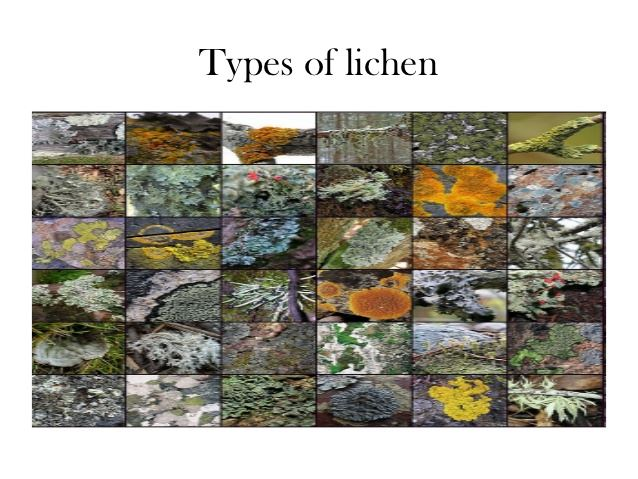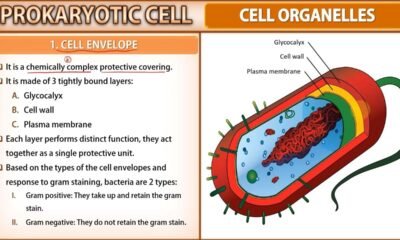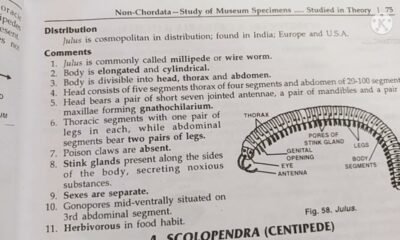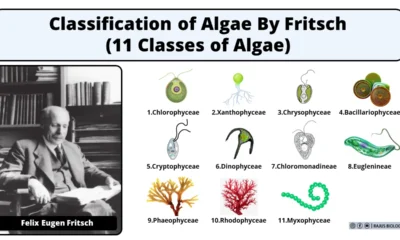Blog
Classification of Lichens | Lichenology

In this article we will discuss about classification of lichens based on Morphology, habitat, internal structure and fungal partner.
Classification of Lichens
- A lichen is not a single organism, it is a symbiotic association between a fungus and algae.
- There is no natural classification system for lichens.
- They are classified based on morphology, habitat, internal structure and fungal partner.
1. Classification of Lichens (Based on Morphology)
- On the basis of their morphology, lichens are classified into three main groups: crustose, foliose and fruticose lichens
I. Crustose Lichens (Encrusting lichens)
- These lichens found as a thin or thick crust over rocks, soil or tree barks.
- They are very difficult to separate from their substrate.
- The thalli may be fully or partially embedded, So that only the fruiting bodies visible above the surface.
- E.g., Lecanora, Graphis, Rhizocarpon, Ochrolechia etc.
II. Foliose Lichens (Leafy lichens)
- These lichens have a flat, expanded, leaf like thallus (commonly grayish or brownish in colour), that spreads out horizontally over the surface.
- They attach to the substrate using rhizoid-like outgrowths called rhizines.
- They can be easily removed without damaging the substrate.
- E.g., Physcia, Parmelia, Gyrophora etc.
III. Fruticose Lichens (Shrubby Lichens)
- These are the upright or hanging lichens.
- They have a branched, bushy thallus that can hang from the substrate.
- The thalli may be erect or pendant.
- These are flat, cylindrical or ribbon like, well branched and resembling small shrubs.
- These lichens are attached only at the base by a flat disc and can be easily removed by hand.
- E.g., Cladonia rangiferina, Usnea barbata etc.
2. Classification of Lichens (Based on Habitat)
- On the basis of habitat lichens can be divided into following categories.
- Muscicolour (Mosses): These lichens grow along with mosses. E.g., Cladonia.
- Foliicolous (Leaves): These lichens are found on the surface of leaves. E.g., Calicium.
- Terricolous (Soil surface or Ground): These lichens occur on the soil surface, particularly in hot climates with sufficient rain and dry summer. E.g., Cladonia, Florekeana, Lecidea, Collema etc.
- Saxicolous (Rocks or Stones): These lichens grow on rocks and stones surface. E.g., Dermatocarpon, Xanthoria, Verrucaria etc.
- Corticolous (Tree barks): These lichens grow on the barks of trees, primarily in subtropical and tropical regions. E.g., Parmelia, Usnea, Grpahis.
- Lignicolous (Wood): They are grow directly on the wood. E.g., Calicium etc.
- Marine Lichens: They are grow on siliceous rocky shores of sea. E.g., Verrucaria, Caloplaca etc.
- Fresh water lichens: These lichens grow on siliceous rocks in fresh water. E.g., Epheba, Hymenelia etc.
3. Classification of Lichens (Based on Internal Structure)
- On the basis of internal structure the lichens are divided into two groups: Homoiomerous lichens and Heteromerous lichens
I. Homoiomerous lichens
- In these lichens, the fungi and algae are not differentiated into distinct layers of tissue. Instead, algal cells are randomly distributed throughout the thallus.
- E.g., Collema and Leptogium
II. Heteromerous lichens
- These lichens are differentiated into several layers of tissues.
- A cross section of the heteromerous lichen shows four distinct zones: Upper cortex, Gonidial layer (Algal layer), Medulla and Lower cortex.
- Upper Cortex: This layer forms the upper surface of the thallus. It is thick, protective and composed of tightly interwoven fungal hyphae, typically lacking intercellular spaces.
- Gonidial layer: This layer consist of algal cells and they are surrounded by thin walled, loosely packed fungal hyphae.
- Medulla: This layer constitutes the bulk of the thallus and made up of loosely packed, thick-walled fungal hyphae.
- Lower Cortex: This layer consists of closely packed, dark coloured hyphae. From the lower cortex, rhizinae arise, which serve to attach and absorb nutrients.
- E.g., Physcia and Parmelia
4. Classification of Lichens (Based on Fungal Partner)
- The fungal partner primarily belongs to ascomycetes, with some basidiomycetes and rarely deuteromycetes.
- On the basis of the fungal partner, lichens are classified into three groups: Ascolichens, Basidiolichens, and Deuterolichens.
I. Ascolichens
- In this lichens, the fungal component is belongs to Ascomycetes.
- The sexual reproduction of Ascolichens is similar to Ascomycotina.
- They produce ascus with ascospores during the sexual reproduction.
- More than 95% of the lichens fall into the Ascolichens
- These lichens are further divided into two subgroups:
- Gynocarpeae: Here, the fruiting body (ascocarp) is an apothecium. E.g., Parmelia.
- Pyrenocarpeae: In this subgroup, the fungal fruiting body (ascocarp) is an perithecium type. E.g., Dermatocarpon.
II. Basidiolichens
- In basidiolichens, the fungal component belongs to basidiomycetes.
- The sexual reproduction of basidiolichens is similar to basidiomycotina
- They produce basidia with basidiospores during sexual reproduction.
- Only a few lichens (four genera reported so far) are classified as Basidiolichens.
- E.g., Dictonema, Corella and Cora
III. Deuterolichens
- They are also known as lichen imperfectii.
- They have fungal partners from the Deuteromycotina division.
- These lichens do not undergo sexual reproduction or should say that lichens with sterile thalli are constituted by this group.
- E.g., Lepraria, Leprocaulo, Crysothrix.

 Blog6 months ago
Blog6 months ago[PPT] Human Reproduction Class 12 Notes

 Blog6 months ago
Blog6 months agoCell The Unit of Life Complete Notes | Class 11 & NEET Free Notes
- Blog6 months ago
Contribution of Indian Phycologists (4 Famous Algologist)
- Blog6 months ago
PG TRB Botany Study Material PDF Free Download

 Blog6 months ago
Blog6 months ago[PPT] The living world Class 11 Notes

 Blog6 months ago
Blog6 months agoJulus General Characteristics | Free Biology Notes

 Blog6 months ago
Blog6 months agoClassification of Algae By Fritsch (11 Classes of Algae)

 Entertainment6 months ago
Entertainment6 months agoIbomma Bappam: Redefines Telugu Streaming Trend














